Discover 20 traditional italian flowers that are perfect for your garden and easy to grow. They bring the charm and beauty of italy right to your doorstep.
Italy is known for its stunning landscapes and vibrant flora. If you want to add a touch of italian elegance to your garden, growing traditional italian flowers is a perfect choice. These flowers not only exude beauty but also hold cultural and symbolic meanings.
From the iconic red poppies of tuscany to the delicate wisteria found in italian gardens, there is a wide variety of flowers that will bring a touch of italy to your own backyard. Whether you prefer classic roses or fragrant jasmine, there is a flower that will suit your taste and thrive in your garden. We will explore 20 traditional italian flowers that are easy to grow and will add an authentic touch to your outdoor space.
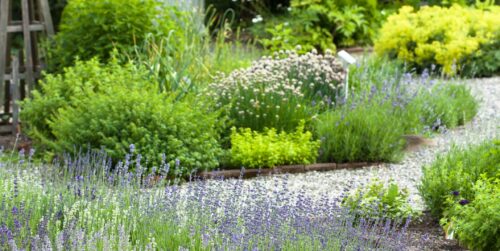
Roses

Classic Italian Roses
Roses have long been prized for their beauty and elegance, and italian roses are no exception. These classic flowers are a symbol of love and romance, and their timeless appeal can add a touch of sophistication to any garden. Whether you’re a seasoned gardener or a beginner, growing italian roses is a great way to enhance your outdoor space.
Table of Contents
Here are a few key points to consider:
- Historical significance: Italian roses have a rich history that dates back centuries. The country has been renowned for its rose cultivation since ancient times, with many varieties originating from italian gardens.
- Fragrance: One of the hallmarks of italian roses is their intoxicating fragrance. Their captivating scents can range from delicate and sweet to rich and spicy, providing a sensory experience that is truly unique.
- Variety of colors: Italian roses come in a wide array of vibrant colors, adding a burst of beauty to your garden. From deep reds and soft pinks to creamy whites and vibrant yellows, there is a color palette to suit every taste and preference.
Colors And Varieties Perfect For Your Garden
Italian roses offer an extensive selection of colors and varieties that are well-suited for various garden styles. Here are some standout choices to consider:
- Rosa ‘belle story’: This stunning rose boasts large, double blooms in a beautiful shade of coral. Its captivating color will make it a focal point in any garden.
- Rosa ‘leonardo da vinci’: Named after the famous italian artist, this rose features exquisite, deep red petals that gracefully unfold into elegant blooms. Its classic charm will add a touch of romance to your outdoor space.
- Rosa ‘gioia’: With its vibrant yellow petals, this rose is sure to brighten up any garden. Its robust nature makes it a perfect choice for beginners.
- Rosa ‘fiorenza’: This delicate pink rose showcases clusters of small, semi-double blooms that exude a charming allure. Its compact size makes it an ideal choice for containers or small gardens.
Care Instructions For Growing Italian Roses
To ensure healthy growth and abundant blooms, proper care is essential when it comes to italian roses. Here are some care instructions to help you cultivate these elegant flowers:
- Planting: Choose a sunny location with well-draining soil for your italian roses. Dig a hole that is wide and deep enough to accommodate the root ball. Mix organic matter into the soil to provide nutrients and improve drainage.
- Watering: Italian roses thrive in moist but not waterlogged soil. Water deeply and thoroughly, ensuring the soil is evenly moist. Avoid overhead watering, as it can promote disease.
- Pruning: Regular pruning helps maintain the shape and health of your italian roses. Prune in late winter or early spring to remove dead or damaged wood, as well as any crossing branches. This encourages new growth and better airflow.
- Fertilizing: Feed your italian roses with a balanced rose fertilizer throughout the growing season to promote healthy growth and abundant blooms. Follow the package instructions for application rates.
- Pest and disease control: Monitor your roses for common pests like aphids and diseases such as black spot. Use organic or chemical controls as necessary to keep your plants healthy.
Growing italian roses can be a rewarding experience, allowing you to enjoy the beauty and elegance of these timeless flowers right in your own garden. With their captivating colors, intoxicating fragrances, and rich history, italian roses are sure to bring joy and sophistication to any outdoor space.
So, roll up your sleeves, dig in the soil, and start growing these classic beauties.
Sunflowers

The Sunny Charm Of Italian Sunflowers
Italian sunflowers are a true symbol of the vibrant and cheerful beauty found in traditional italian gardens. With their tall stalks, large yellow blooms, and glistening petals, these sunflowers effortlessly bring a touch of the italian countryside to your own backyard.
Whether you’re a seasoned gardener or just starting out, growing italian sunflowers is a rewarding and easy endeavor that will brighten up your garden and your spirits. Here are some key points to consider when adding these vibrant italian blooms to your garden:
- Italian sunflowers, also known as helianthus annuus, are native to north america but have become a beloved flower in italy due to their stunning appearance and resilience.
- These sunflowers can grow tall, reaching heights of up to 10 feet, making them a striking addition to any garden landscape.
- Italian sunflowers come in a variety of yellow shades, ranging from pale lemon to deep gold, allowing you to choose the hue that best suits your garden aesthetic.
- The large, sun-like blooms of italian sunflowers not only make a visual statement but also attract pollinators, such as bees and butterflies, to your garden, promoting a healthy ecosystem.
- These sunflowers prefer full sun exposure, so ensure they are planted in an area that receives at least six hours of direct sunlight each day.
- Italian sunflowers are relatively easy to grow from seeds, making them an ideal choice for beginners. Simply sow the seeds directly into the soil after the last frost and gently water them.
- Ensure the soil is well-draining and rich in organic matter to provide the best conditions for your sunflowers to thrive.
- Regular watering is important during the early stages of growth, but once established, italian sunflowers are quite drought-tolerant and don’t require excessive watering.
- It’s essential to provide support for the tall stalks of these sunflowers, as they can become top-heavy when in bloom. Staking or using a trellis system can help prevent them from bending or breaking.
- Italian sunflowers can be incorporated into your garden design in various ways, such as creating a stunning sunflower border, planting them in clusters for a dramatic effect, or even growing them in large pots or containers on your patio.
Growing Tips For Italian Sunflowers
- Start by choosing the right sunflower variety for your garden. Some popular italian sunflower varieties include ‘italian white’, ‘lemon queen’, and ‘italian tree’.
- Amend the soil with compost or well-rotted manure before planting to provide the sunflowers with essential nutrients.
- Make sure to space the sunflower seeds or seedlings adequately to allow room for growth and prevent overcrowding.
- Water the sunflowers deeply but infrequently, ensuring the soil remains moist but not waterlogged.
- Consider mulching around the base of the sunflowers to help conserve soil moisture and suppress weed growth.
- Protect young sunflower seedlings from slugs and snails by placing a copper tape barrier around the base or using natural deterrents like crushed eggshells.
- Regularly deadhead faded sunflower blooms to encourage continuous blooming and prevent the formation of seeds.
- Prune any damaged or withered leaves or stems to maintain the overall health and appearance of the sunflowers.
- Harvest sunflower seeds when the flower heads have dried out and turned brown. Simply cut the heads off and hang them upside down in a warm, dry location to allow the seeds to fully mature and dry before storing.
- Remember to rotate the location of sunflowers in your garden each year to prevent the buildup of pests or diseases.
These helpful tips will ensure that your italian sunflowers thrive, adding a burst of color and charm to your garden throughout the summer months.
How To Incorporate Sunflowers Into Your Garden Design
When it comes to incorporating italian sunflowers into your garden design, the possibilities are endless. These vibrant blooms can be utilized in various ways to create a visually appealing and balanced outdoor space. Here are some ideas to inspire you:
- Create a stunning sunflower border by planting a row of italian sunflowers along the edge of your garden beds or pathways. This will provide a striking focal point that draws the eye and adds depth to your overall garden design.
- Plant italian sunflowers in clusters or groups of varying heights to create a vibrant display that mimics the natural beauty found in a field of sunflowers. This arrangement will provide a sense of abundance and attract attention from all angles.
- Incorporate italian sunflowers into a cottage garden design by intermixing them with other vibrant flowers and plants. The combination of sunflowers with roses, lavender, and daisies can create a charming and romantic aesthetic.
- Grow italian sunflowers in large pots or containers and place them strategically around your patio or outdoor seating area. This will add a touch of sunshine and create a cheerful atmosphere for outdoor gatherings.
- Use italian sunflowers as a backdrop for a vegetable garden. These tall flowers can provide shade and vertical interest while attracting beneficial insects to help pollinate your crops.
- Combine italian sunflowers with ornamental grasses or tall foliage plants for a textural contrast and a dynamic visual impact.
- Consider incorporating sunflowers of different sizes or colors to add depth and variety to your garden design.
- Use italian sunflowers as cut flowers for indoor arrangements to bring the beauty of the garden into your home.
With their sunny disposition and vibrant blooms, italian sunflowers are a versatile addition to any garden design. Get creative and experiment with different arrangements and combinations to make your garden truly shine.
Tulips

Italian Tulip Festivals And Traditions
- Italy is known for its vibrant tulip festivals and rich traditions associated with these beautiful spring flowers.
- One of the most popular tulip festivals in italy is the spello infiorate, held in the charming town of spello in umbria. During this festival, the streets are adorned with stunning tulip flower carpets, creating a colorful spectacle for visitors.
- Another renowned tulip festival takes place in the town of bassano del grappa, where locals celebrate the tulipanomania festival. This event showcases unique tulip varieties and includes various activities and exhibitions.
- In valsugana, a valley in the trentino region, the tulipanomania festival is celebrated by growing thousands of tulips in public parks and gardens. Visitors can admire the vast displays of tulips in full bloom, creating a mesmerizing sight.
- Italians have a longstanding tradition of giving tulips as gifts, especially during spring celebrations. Tulips are often associated with love, elegance, and renewal, making them a popular choice for special occasions such as weddings and anniversaries.
Cultivating Italian Tulips In Your Garden
- Growing italian tulips in your own garden is a rewarding experience that allows you to enjoy the beauty of these flowers throughout the spring season.
- Begin by selecting tulip bulbs that are suitable for your specific region and climate. Italian tulip varieties like verona, milano, and venice are particularly well-adapted to different italian climates.
- Prepare the soil by ensuring it is well-drained and fertile. Tulips thrive in sunny locations, so choose a spot in your garden that receives ample sunlight.
- Plant the tulip bulbs in the fall, around september or october, before the first frost. Dig holes that are approximately 6 inches deep, place the bulbs with the pointed end facing up, and cover them with soil.
- Water the tulip bulbs after planting and ensure they receive regular watering throughout the growing season. Be cautious not to overwater, as this can cause the bulbs to rot.
- As the tulips grow, you can provide support for taller varieties by using stakes or cages to prevent them from bending or breaking in strong winds.
- Once the tulips bloom, you can enjoy their vibrant colors and alluring fragrance. Consider harvesting some tulips for floral arrangements to bring their beauty indoors.
Captivating Colors And Patterns Of Italian Tulips
- Italian tulips boast an array of captivating colors and patterns, making them a standout choice for any garden or floral display.
- One popular italian tulip variety is the tulipa praestans ‘fusilier,’ which features vibrant red flowers with striking black centers. This variety adds a bold and dramatic touch to any garden or flower bed.
- The tulipa tarda is another italian tulip that mesmerizes with its stunning yellow petals adorned with white tips. It creates a beautiful contrast when planted alongside other tulip varieties.
- For those seeking softer hues, the tulipa saxatilis ‘lilac wonder’ is a delightful choice. This tulip showcases delicate lilac petals with a golden center, creating an enchanting pastel display.
- Italian tulips also come in mesmerizing bi-color combinations, such as the tulipa ‘ballerina.’ This variety features petals in shades of coral and pink, adding a touch of elegance and grace to any garden.
- The tulipa ‘apricot parrot’ is a captivating italian tulip with apricot and green petals that resemble the feathers of a parrot. Its unique appearance makes it a fascinating addition to any garden or floral arrangement.
- From bold and vibrant to soft and pastel, italian tulips offer a wide range of colors and patterns that can transform any garden into a captivating spring haven.
Irises
The Historical Significance Of Italian Irises
Italian irises hold a special place in the country’s rich history and culture. Here are a few key points about their historical significance:
- Irises have been cultivated in italy for centuries, with their origins tracing back to ancient civilizations such as the greeks and romans.
- In italy, irises have been popularly associated with heraldry and have featured prominently in the coats of arms of noble families, cities, and regions.
- The city of florence, in particular, has a deep connection with irises. The florentine iris, or iris florentina, is the official symbol of the city, representing its elegance and sophistication.
- Irises have also been used in traditional italian perfumery, where their delicate and captivating scent is extracted and incorporated into luxurious fragrances.
Growing And Caring For Italian Iris Varieties
Growing italian irises in your garden can be a rewarding experience. Here are some essential tips to help you with their cultivation and care:
- Choose a sunny location for planting, as most italian iris varieties thrive in full sunlight. Ensure the soil is well-drained and enriched with organic matter.
- The best time to plant italian irises is in late summer or early fall. Dig a hole deep enough to accommodate the rhizome, keeping in mind that they should be planted shallowly with the top exposed.
- Water the irises regularly, especially during dry spells. However, be cautious not to overwater and cause root rot.
- Fertilize the plants in early spring with a balanced, slow-release fertilizer to encourage healthy growth and vibrant blooms.
- Italian irises require dividing every few years to prevent overcrowding and maintain their vigor. This task is typically done in late summer after the flowering season.
Unique Features Of Italian Irises
Italian irises possess remarkable characteristics that set them apart from other varieties. Here are some notable features to admire:
- Irises come in an array of captivating colors, including vibrant purples, soft blues, sunny yellows, and pure whites. This diverse color palette allows you to create stunning visual displays in your garden.
- Their distinctive sword-shaped leaves provide an attractive backdrop to the showy blooms, adding an element of elegance and grace to any landscape.
- Italian irises display a mesmerizing array of flower forms, from the classic tri-petal shape to the frilly and intricate petals of ruffled varieties.
- These irises have the ability to attract pollinators such as bees and butterflies, making them a valuable addition to any pollinator-friendly garden.
- Italian irises bloom in spring, adding a delightful burst of color to your outdoor space and signaling the arrival of the new season.
With their historical significance, ease of cultivation, and unique features, italian irises are a wonderful choice for bringing a touch of beauty and sophistication to your garden. Whether you’re an experienced gardener or just starting your gardening journey, these captivating flowers are sure to reward you with their stunning blooms and enchanting fragrance.
Lavender
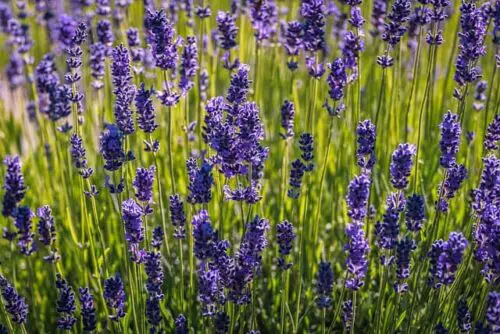
The Versatility Of Italian Lavender
Italian lavender, known for its fragrant blooms and stunning purple hue, is a versatile and easy-to-grow flower that can add charm and elegance to any garden. This mediterranean native is well-loved for its captivating scent and medicinal properties. Here are a few key points about the versatility of italian lavender:
- It’s a hardy plant: Italian lavender thrives in hot and sunny climates, making it an ideal choice for gardens in italy and other mediterranean regions. However, it can also adapt to cooler climates, making it a versatile choice for gardeners around the world.
- Beautiful and fragrant blooms: The vibrant purple flowers of italian lavender are not only visually appealing but also emit a delightful fragrance that can fill your garden with a calming aroma. The flowers are also attractive to butterflies and bees, making them an excellent addition if you want to attract pollinators to your garden.
- Medicinal and culinary uses: Italian lavender has been used for centuries for its various medicinal properties. Its essential oil is known for its calming and stress-relieving effects, making it a popular ingredient in aromatherapy. Additionally, dried lavender flowers can be used to make fragrant sachets, potpourri, or infused into oils for culinary purposes.
Tips For Growing Italian Lavender Successfully
Growing italian lavender in your garden can be a rewarding experience. Here are a few tips to help you grow italian lavender successfully:
- Choose the right location: Italian lavender thrives in full sun, so make sure to choose a sunny spot in your garden. It also prefers well-drained soil, so adding some gravel or sand to the planting area can help improve drainage.
- Provide proper drainage: Good drainage is crucial for the health of italian lavender. To ensure your lavender plants don’t become waterlogged, consider planting them on a slope or in raised beds. You can also mix some sand or gravel into the soil to improve drainage.
- Water sparingly: Italian lavender is a drought-tolerant plant and dislikes excessive watering. Water your lavender plants deeply but infrequently, allowing the soil to dry out between watering sessions. Overwatering can lead to root rot and other issues.
- Prune regularly: Pruning is essential for maintaining the shape and health of your italian lavender plants. Prune them in early spring before new growth appears to remove any dead or diseased branches. Regular pruning will also encourage bushier growth and more abundant blooms.
Ways To Use Italian Lavender In Your Garden
Italian lavender can be used in various ways to enhance the beauty and functionality of your garden. Here are some ideas for incorporating italian lavender into your garden:
- Create a lavender hedge: Italian lavender’s compact and bushy growth habit makes it perfect for creating a fragrant and visually appealing hedge. Line the pathway or borders of your garden with rows of lavender plants for a stunning display and a sweet scent as you walk by.
- Plant in containers: Italian lavender’s adaptability and beauty make it an excellent choice for container gardening. Fill pots or decorative containers with well-draining soil and place them on your patio or balcony for a touch of mediterranean charm.
- Use as a companion plant: Italian lavender is not only beautiful but also acts as a natural pest repellent. Plant it alongside vegetables or other susceptible plants to deter pests like aphids or moths. Its strong aroma can help keep unwanted insects at bay.
- Harvest and enjoy: Once your italian lavender is in full bloom, harvest the flowers and create your own lavender sachets, potpourri, or lavender-infused oils. The flowers can also be used in cooking, adding a delicate floral flavor to desserts, teas, or even savory dishes.
Italian lavender is a versatile plant that offers beauty, fragrance, and functionality to any garden. By following these tips and exploring different ways to incorporate it into your garden, you can enjoy the many benefits that this traditional italian flower has to offer.
So go ahead and start growing your own lavender oasis today!
Geraniums
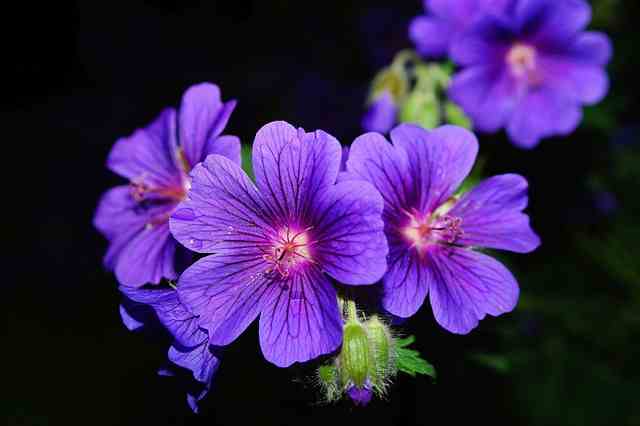
Geraniums are a beloved flower in italian gardens, known for their vibrant colors and beautiful blooms. Whether you’re a seasoned gardener or just starting out, growing italian geraniums can be a rewarding and enjoyable experience. In this section, we will explore popular italian geranium varieties, essential care tips, and creative uses for these stunning flowers in your garden.
Popular Italian Geranium Varieties
Italian gardens are filled with a wide variety of geraniums, each with their own unique characteristics and charm. Here are some popular italian geranium varieties you can easily grow in your garden:
- Zonal geraniums: These geraniums are known for their distinctive dark green, circular or horseshoe-shaped leaves with a colored zone around the edge. They produce large clusters of flowers in shades of red, pink, orange, and white.
- Ivy geraniums: Ivy geraniums have trailing stems and are ideal for hanging baskets or cascading over walls. They are known for their cascading clusters of flowers in vibrant shades of red, pink, purple, and white.
- Scented geraniums: As the name suggests, scented geraniums have fragrant leaves that release delightful aromas when brushed against or crushed. Varieties include rose-scented, lemon-scented, mint-scented, and many more.
- Regal geraniums: Regal geraniums, also known as martha washington geraniums, are known for their vibrant and showy blooms. They produce large clusters of flowers in shades of pink, purple, white, and burgundy.
- Angel geraniums: Angel geraniums are a compact variety with small, round leaves and clusters of delicate flowers. They come in various colors, including white, pink, lavender, and salmon.
Essential Care Tips For Italian Geraniums
To ensure your italian geraniums thrive and produce abundant blooms, here are some essential care tips to keep in mind:
- Light requirements: Italian geraniums thrive in full sun or partial shade. Ensure they receive at least 6-8 hours of direct sunlight each day for optimal growth and blooming.
- Watering: Geraniums prefer well-draining soil, so avoid over-watering and let the soil dry out between waterings. Water at the base of the plant to prevent fungal diseases.
- Fertilization: Feed your italian geraniums with a balanced slow-release fertilizer every 4-6 weeks during the growing season to promote healthy growth and prolific flowering.
- Deadheading: Regularly remove spent flowers by pinching or cutting them off to encourage continuous blooming and prevent the plant from going to seed.
- Winter care: In colder climates, either bring your geraniums indoors or treat them as annuals and replace them each year. In warmer regions, protect them from frost by covering them or moving them to a more sheltered location.
Creative Uses For Italian Geraniums In Your Garden
Italian geraniums offer more than just pretty blooms – they can also add a touch of creativity and charm to your garden. Here are some creative ways to utilize italian geraniums in your garden:
- Container gardening: Plant geraniums in colorful pots or hanging baskets to add pops of vibrant color to patios, balconies, or porches.
- Floral borders: Create stunning floral borders by planting geraniums in mixed beds or lining garden pathways. Combine different varieties to achieve a vibrant and eye-catching display.
- Vertical gardening: Attach small pots or containers with geraniums to trellises or fences to create a vertical garden. This adds visual interest and maximizes space in smaller gardens.
- Companion planting: Pair geraniums with other plants that benefit from their pest-repellent properties, such as tomatoes, roses, or herbs like basil and thyme.
Italian geraniums are a versatile and captivating addition to any garden. Their vibrant colors, delightful scents, and easy-care nature make them a popular choice among gardeners around the world. By selecting the right varieties, providing essential care, and exploring creative uses, you can enjoy the beauty of italian geraniums in your own garden.
Poppies

The Natural Beauty Of Italian Poppies
Italian poppies, also known as papaver rhoeas, are colorful and vibrant wildflowers that add a touch of natural beauty to any garden. These traditional italian flowers are famous for their delicate papery petals in shades of red, pink, and purple that dance in the breeze.
Here are some key points about the natural beauty of italian poppies:
- Italian poppies are native to italy and have been cultivated there for centuries, making them a symbol of traditional italian gardens.
- The vibrant colors of italian poppies make them a sight to behold and bring a sense of joy and cheerfulness to the garden.
- These wildflowers have a charming and whimsical appearance, with their delicate petals resembling tissue paper and their black centers adding a touch of drama.
- Italian poppies are often associated with fields of wildflowers found in the italian countryside, creating a romantic and picturesque landscape.
Cultivating Italian Poppies In Your Garden
If you’re inspired by the natural beauty of italian poppies and would like to bring their enchanting presence to your own garden, here are some tips for cultivating them successfully:
- Choose a sunny spot in your garden with well-drained soil as italian poppies thrive in full sunlight.
- Start by preparing the soil by removing weeds and loosening it with a garden fork. This will help the poppy seeds establish strong roots.
- Sow the seeds in early spring or late fall, as these are the best times for germination.
- Scatter the seeds evenly on the soil and lightly press them down. Avoid covering them with too much soil, as poppy seeds need light to germinate.
- Water the seeds gently but avoid overwatering, as it can lead to rotting. Keep the soil consistently moist until the seeds germinate.
- Once the seedlings have emerged, thin them out to allow proper spacing, as overcrowding can hinder their growth.
- Italian poppies are low-maintenance flowers that require minimal care. However, they benefit from occasional watering during dry spells and deadheading to encourage continuous blooming.
- Enjoy the beauty of italian poppies in your garden and be sure to save their seeds for future plantings.
Adding A Touch Of Wildness With Italian Poppies
Italian poppies can bring a touch of wildness and charm to any garden. Here are some reasons why you should consider adding these traditional italian wildflowers to your garden:
- Italian poppies are versatile flowers that can be grown in borders, rock gardens, or wildflower meadows. Their vibrant colors create a striking contrast against green foliage.
- These flowers attract pollinators such as bees and butterflies, contributing to the overall health of your garden’s ecosystem.
- With their delicate petals and whimsical appearance, italian poppies make beautiful cut flowers for bouquets and floral arrangements. Bring a touch of italian romance indoors.
- Italian poppies have a long blooming season, with flowers appearing from spring to early summer. Their continuous display of color adds interest and variety to your garden.
- These wildflowers are also known for their self-seeding nature, meaning they will often return year after year, filling your garden with their natural beauty.
Incorporating italian poppies into your garden not only adds visual appeal and a touch of wildness but also connects you to the rich tradition and natural beauty of italy. Enjoy their vibrant colors and delicate presence as you create your own italian-inspired oasis.
Lilies
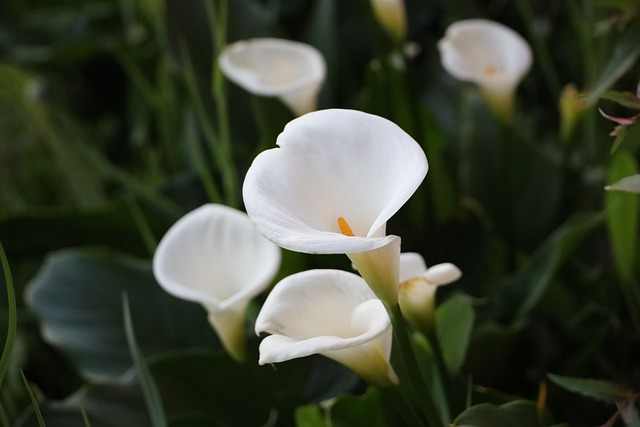
Symbolism And Cultural Significance Of Italian Lilies
Lilies hold a special place in italian culture, symbolizing purity, beauty, and rebirth. These majestic blooms have been cultivated in italy for centuries and are often associated with religious ceremonies, weddings, and festivals. Italian lilies have deep cultural significance, representing the rich history and traditions of the country.
Here are some key points to understand the symbolism and cultural significance of italian lilies:
- Lilies are commonly used in religious rituals, particularly during easter, where they represent the resurrection of christ.
- In italian folklore, lilies are believed to bring good luck and prosperity to homes and families.
- Italian lilies are also associated with weddings and are often included in bridal bouquets symbolizing purity and love.
- These blooms have inspired countless artists and poets throughout history, appearing in various works of art, literature, and music.
- Italian lilies are seen as a symbol of italian pride and are even featured in national emblems and coats of arms.
Italian Lily Varieties To Enhance Your Garden
If you want to add a touch of italian elegance to your garden, consider growing italian lilies. Known for their exquisite beauty and captivating fragrance, these varieties will surely enchant you. Here are some popular italian lily varieties to consider:
- Lilium candidum (madonna lily): This white lily with its trumpet-shaped flowers is one of the oldest cultivated plants in the world. It has a sweet fragrance and is commonly associated with religious symbolism.
- Lilium martagon (turk’s cap lily): This unique lily variety features downward-facing flowers in shades of pink, purple, and white. It adds a touch of wild beauty to any garden.
- Lilium longiflorum (easter lily): This classic lily variety is often seen during easter celebrations. Its large, pure white flowers and sweet fragrance make it a popular choice for gardeners.
- Lilium regale (regal lily): With its fragrant white flowers and yellow throat, the regal lily is a must-have for any garden. Its tall stature and elegant blooms make it a striking focal point.
- Lilium ‘stargazer’: This hybrid lily variety is known for its vibrant pink and white flowers with dark speckles. Its strong fragrance and upward-facing blooms make it a favorite among garden enthusiasts.
Ideal Conditions For Growing Italian Lilies
To ensure the successful growth of italian lilies in your garden, it’s important to provide them with the right conditions. Here are some key points to consider:
- Sun exposure: Italian lilies thrive in full sun or partial shade. They require at least six hours of direct sunlight daily to bloom to their full potential.
- Soil requirements: Well-draining soil is crucial for italian lilies. They prefer slightly acidic to neutral soil with good fertility. Adding compost or organic matter can improve soil quality.
- Planting depth: Italian lilies should be planted at a depth of about 3 times their bulb’s size. This ensures proper root development and stability.
- Watering: Regular watering is essential for italian lilies, especially during dry spells. However, they don’t like to sit in waterlogged soil, so make sure the soil has good drainage.
- Mulching: Applying a layer of organic mulch around the base of the plants helps retain moisture, suppress weed growth, and regulate soil temperature.
- Maintenance: Remove spent blooms to encourage more flowers to grow. In autumn, cut back the foliage to ground level once it turns yellow and withers.
By incorporating these italian lily varieties into your garden and providing them with the ideal growing conditions, you can enjoy the beauty and cultural significance of these majestic italian blooms.
Hydrangeas

Italy is known for its picturesque landscapes and blooming gardens, and if you’re looking to add a touch of romance to your own garden, hydrangeas are the perfect choice. These beautiful flowers have long been associated with love, beauty, and grace, making them a popular choice for italian gardens.
In this section, we will explore the different italian hydrangea varieties, as well as tips for pruning and caring for these enchanting blooms. We’ll also provide some design ideas on how to incorporate italian hydrangeas into your garden to create a truly romantic oasis.
Italian Hydrangea Varieties For A Romantic Garden
When it comes to hydrangeas, italy boasts an array of stunning varieties that will add a romantic charm to your garden. Here are some italian hydrangea varieties to consider:
- Hydrangea macrophylla: This is the most common hydrangea variety in italy, known for its large blooms and vibrant colors such as pink, blue, and purple. It is sure to attract attention and create a romantic atmosphere in your garden.
- Hydrangea arborescens: With its delicate, lacy blooms, this variety adds an ethereal touch to any garden. It blooms in beautiful shades of white and pale green, creating a soft and romantic ambiance.
- Hydrangea petiolaris: If you have a wall or fence you’d like to cover with romantic blooms, this climbing hydrangea variety is the perfect choice. Its delicate white flowers will create a serene and enchanting backdrop.
Pruning And Caring For Italian Hydrangeas
To ensure your italian hydrangeas thrive and continue to grace your garden with their romantic blooms, proper pruning and care are essential. Here are some key points to keep in mind:
- Pruning: Hydrangeas should be pruned in late winter or early spring before new growth begins. Remove any dead or damaged wood and thin out the branches to improve airflow and encourage healthy growth.
- Watering: Hydrangeas prefer consistent moisture, but they also require good drainage. Water deeply and regularly, especially during dry spells, to keep the soil moist but not waterlogged.
- Fertilizing: Feed your hydrangeas with a balanced, slow-release fertilizer in early spring. Avoid over-fertilizing, as this can lead to excessive foliage growth at the expense of blooms.
Design Ideas Incorporating Italian Hydrangeas
The romantic charm of italian hydrangeas can be amplified when incorporated into well-designed garden spaces. Here are some design ideas to inspire you:
- Create a hydrangea border: Plant a row of hydrangeas along a pathway or fence to create a stunning border that bursts with romantic blooms.
- Mix hydrangeas with other flowers: Combine hydrangeas with other flowers, such as roses or lavender, to create a visually captivating and fragrant garden oasis.
- Go for a monochromatic scheme: Create an elegant and romantic look by planting hydrangeas of the same color en masse. Whether it’s a sea of pink or a cloud of white blooms, the impact will be truly enchanting.
With these italian hydrangea varieties and design ideas in mind, you can transform your garden into a romantic paradise reminiscent of italy’s picturesque landscapes. Let the beauty and grace of hydrangeas fill your outdoor space with love and charm.
Daisies
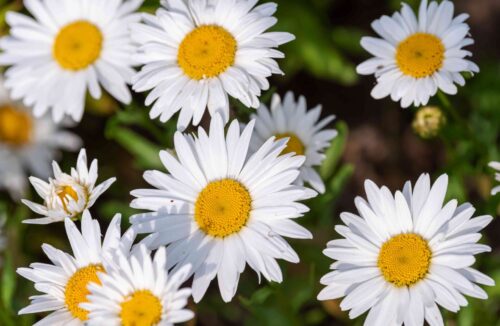
Italian Daisy Varieties For A Playful Garden
Italian daisies are whimsical blooms that can add a touch of playfulness to any garden. Here are a few italian daisy varieties to consider:
- Margherita daisy: This classic italian daisy variety features delicate white petals with a yellow center. It is named after the margherita pizza and symbolizes purity and innocence.
- Tuscan daisy: With its vibrant yellow petals and dark center, the tuscan daisy adds a pop of color to your garden. It is known for its resilience and ability to thrive in various climates.
- Fiori di feltro daisy: This unique italian daisy variety has velvety, felt-like petals in shades of pink, purple, and white. It is often used in floral arrangements and wreaths.
Easy-Care Tips For Italian Daisies
Italian daisies are relatively easy to care for, making them a great choice for both beginner and seasoned gardeners. Here are some tips to help you keep your italian daisies healthy and vibrant:
- Planting: Choose a sunny location in your garden with well-drained soil. Italian daisies thrive in full sun but can tolerate some partial shade.
- Watering: Water your italian daisies regularly, especially during dry spells. Be careful not to overwater, as this can lead to root rot.
- Fertilizing: Apply a balanced, slow-release fertilizer once a month during the growing season to enhance the growth and blooming of your daisies.
- Pruning: Deadhead faded flowers regularly to promote continuous blooming. Trim back any leggy stems to encourage bushier growth.
- Pest control: Italian daisies are generally resistant to pests and diseases. However, keep an eye out for aphids and apply natural deterrents or insecticidal soap if necessary.
Creating A Cheerful Atmosphere With Italian Daisies
Italian daisies have a cheerful and lively presence that can instantly brighten up any garden. Here are a few ways you can use italian daisies to create a joyful atmosphere:
- Garden borders: Plant italian daisies along the edges of your garden beds or pathways to create a vibrant border. Mix different varieties for a playful and colorful display.
- Container gardening: Italian daisies are perfect for container gardening. Choose colorful pots and plant a mix of daisies to create a focal point on your patio or balcony.
- Cut flowers: Bring the beauty of italian daisies into your home by cutting a few blooms and arranging them in a vase. Their bright colors and delicate petals will instantly liven up any space.
- Floral arrangements: Combine italian daisies with other flowers and foliage for beautiful floral arrangements. Their whimsical nature adds a touch of charm to any bouquet.
Italian daisies bring a sense of joy and playfulness to your garden. Whether you choose to plant them in the ground or in containers, these vibrant blooms are sure to create a cheerful atmosphere that will be enjoyed by both you and your visitors.
Embrace the charm of these italian daisy varieties and watch your garden come to life!
Orchids: Exotic Italian Delights
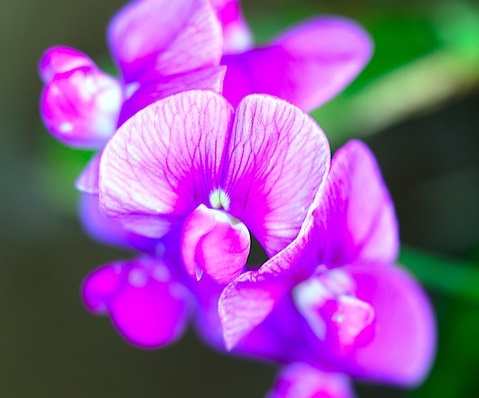
The Allure Of Italian Orchids
Italy, known for its rich cultural heritage and tantalizing cuisine, also boasts a vibrant array of exquisite orchids. These exotic italian delights captivate both avid gardeners and flower enthusiasts with their exquisite beauty and enchanting fragrances. If you’re looking to add a touch of elegance and sophistication to your garden, italian orchids are the perfect choice.
Let’s explore the allure of italian orchids and learn how to care for them at home.
How To Care For Italian Orchids At Home
Italian orchids, like all orchid varieties, require special care to thrive and bloom to their full potential. Here are some essential tips to help you provide the ideal conditions for your italian orchids at home:
- Light: Orchids need bright, indirect light to flourish. Place your italian orchids near a window with filtered sunlight or use artificial grow lights to ensure they receive the required amount of light.
- Temperature and humidity: Italian orchids thrive in temperatures ranging from 60°f to 80°f (15°c to 27°c). Maintain a consistent temperature within this range and keep the humidity levels between 50% and 70% by using a humidifier or placing a tray filled with water near the orchids.
- Watering: Avoid overwatering your italian orchids as they prefer slightly moist conditions. Water them thoroughly once a week, allowing the water to drain completely. As a general rule, it’s best to water orchids in the morning to allow any excess moisture on the leaves to evaporate.
- Potting medium: Use a well-draining orchid potting mix that allows air circulation around the roots. The mix should consist of a combination of bark, sphagnum moss, and perlite to provide adequate drainage.
- Fertilization: Feed your italian orchids with a balanced orchid fertilizer every two weeks during the growing season (spring and summer) and monthly during the rest period (fall and winter). Follow the instructions on the fertilizer package for the correct dosage.
Unique Orchid Varieties To Showcase In Your Garden
Italian orchids offer a wide range of unique and captivating varieties to showcase in your garden. Here are a few exquisite selections that will add a touch of elegance to your outdoor space:
- Cymbidium: Known for its stunning and long-lasting blooms, the cymbidium orchid is a showstopper with its vibrant colors ranging from white and pink to yellow and green.
- Ophrys: This wild orchid variety native to italy is renowned for its intricate patterns and resemblance to different insects. The ophrys orchid is truly a sight to behold.
- Dendrobium: With its graceful arching stems and delicate blooms, the dendrobium orchid is a popular choice among orchid enthusiasts. It comes in various colors, including white, purple, and pink.
- Phalaenopsis: Commonly known as the moth orchid, phalaenopsis orchids are prized for their large, vibrant flowers. Their elegant and exotic appearance adds a touch of glamour to any garden.
- Oncidium: The oncidium orchid, also known as the dancing lady orchid, showcases vibrant blooms with fringed petals. It adds a splash of color and charm to gardens with its sunny yellow and rich burgundy hues.
Now that you’re familiar with the allure of italian orchids, their care requirements, and some unique varieties to consider, you’re ready to embark on an awe-inspiring journey of creating a stunning orchid garden in your own backyard. With a little care and attention, you can enjoy the beauty and elegance of these exotic italian delights right at home.
Pansies: Colorful Italian Flowers
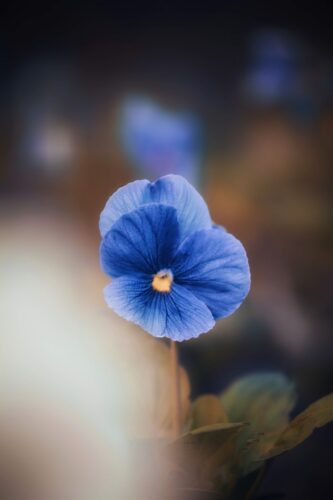
The Charm Of Italian Pansies
Pansies, with their vibrant and captivating colors, are a delightful addition to any garden. These traditional italian flowers bring a touch of charm and beauty to your outdoor space. Here are some key points about italian pansies:
- Pansies are known for their unique and distinct coloring, with flowers that come in a wide range of hues, including vibrant pinks, purples, yellows, blues, and whites.
- These flowers are cherished for their adorable “faces” – the dark centers and overlapping petals resemble beautiful little masks, giving them an endearing appeal.
- Italian pansies are known for their exceptional resilience and ability to withstand cooler temperatures, making them perfect for colder regions or seasons.
- These flowers are relatively easy to grow, making them a fantastic choice for both beginner and experienced gardeners alike.
Best Practices For Growing Italian Pansies
If you’re considering growing italian pansies in your own garden, here are some helpful tips to ensure their success:
- Choose the right location: Italian pansies thrive in partial shade, so find a spot in your garden that receives a few hours of sunlight each day.
- Prepare the soil: Prior to planting, ensure that the soil is well-drained and enriched with organic matter. This will create an ideal environment for the pansies to flourish.
- Sow the seeds or plant seedlings: Italian pansies can be grown from seeds or purchased as young seedlings. Plant them about 6-8 inches apart to allow ample space for growth.
- Water appropriately: Keep the soil consistently moist, but be careful not to overwater. It’s best to water the plants from the base to avoid wetting the foliage, which can lead to disease.
- Deadhead regularly: Remove faded flowers to encourage continuous blooming and to prevent the plants from going to seed prematurely.
- Apply fertilizer sparingly: Italian pansies don’t require excessive fertilization, but a balanced slow-release fertilizer can be applied once or twice during the growing season.
Design Tips For Incorporating Pansies In Your Garden
Pansies not only bring vibrant colors to your garden, but they also offer versatility in design. Here are some design tips to help you incorporate pansies effectively:
- Plant in containers: Pansies are excellent choices for container gardening. Whether in hanging baskets, pots, or window boxes, their cascading flowers can add a stunning visual display.
- Mix and match colors: Experiment with various color combinations to create eye-catching displays. Consider using pansies in complementary shades or contrasting colors to achieve a visually striking effect.
- Create borders or edgings: Plant pansies in rows along garden borders or pathways for a neat and defined look. Their low-growing habit makes them perfect for edging or as ground covers.
- Combine with other plants: Pair pansies with other cool-season flowers, such as snapdragons or violas, for a multi-layered and stunning floral arrangement.
- Play with varying heights: Incorporate taller plants or shrubs behind pansies to provide a backdrop and add depth to your garden design.
Italian pansies offer a burst of color, character, and charm to your outdoor space. Experiment with different design ideas and enjoy their delightful presence throughout the seasons.
Marigolds: Italian Traditions
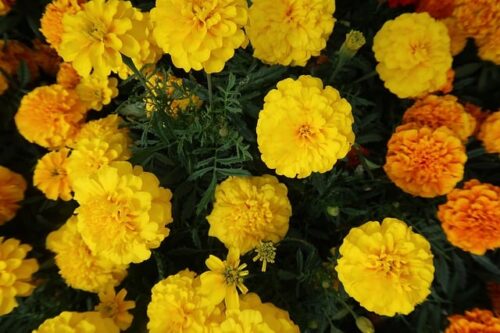
Marigolds hold a special place in italian culture, with their vibrant blooms and rich symbolism. In italy, these flowers are not just a pretty addition to gardens – they are deeply intertwined with traditions and customs that have been passed down through generations.
Let’s explore the fascinating world of italian marigolds and discover their significance in this captivating culture.
Italian Marigold Festivals And Customs
Italian marigolds are celebrated through colorful festivals and cherished customs. Here are some key points to know about the festivals and customs surrounding these beloved flowers:
- Festival of the marigold: In the town of summonte, located in the campania region, an annual festival takes place to honor the marigold. The streets come alive with vibrant displays of flowers, parades, and traditional music, creating a truly enchanting atmosphere.
- Petals for good luck: It is believed in italy that if you pluck a marigold petal and keep it with you, it will bring good luck. This tradition is often practiced during festive occasions or important life events such as weddings or graduations.
- Decorating graves: During all saints’ day and all souls’ day, marigolds are commonly used to decorate graves in italy. These bright flowers are seen as a way to honor and remember the loved ones who have passed away.
- Wedding bouquets: In many italian weddings, marigolds are included in the bride’s bouquet as a symbol of desire for a prosperous and joyful union. The bright orange and yellow hues of the flowers add a vibrant touch to the overall celebration.
Growing Italian Marigolds For Luck And Protection
In addition to their cultural significance, italian marigolds are also favored for their practical uses. Here are some key points about growing italian marigolds for luck and protection:
- Natural pest repellent: Italian marigolds, specifically the tagetes variety, emit a scent that repels insects, making them a natural pest control option for your garden. Planting marigolds around vegetables and herbs can help protect them from unwanted pests.
- Good luck charm: As mentioned earlier, marigolds are traditionally considered a symbol of good luck. By growing these beautiful flowers in your garden, you can bring prosperity and good fortune into your life.
- Medicinal properties: Italian marigolds have long been treasured for their medicinal properties. The flowers are believed to have anti-inflammatory and antiseptic qualities, making them a popular ingredient in herbal remedies and skincare products.
Cultural Significance Of Italian Marigolds
Italian marigolds hold a deep cultural significance, extending beyond mere aesthetics. Here are some points highlighting their cultural significance:
- Symbol of the sun: The bright, radiant blooms of marigolds are seen as a symbol of the sun in italian culture. The vibrant colors represent warmth, vitality, and the joy of life.
- Religious symbolism: Marigolds are associated with religious celebrations and are commonly used in religious processions and ceremonies throughout italy. Their presence adds a touch of spirituality and reverence to these occasions.
- Decorative traditions: Italian marigolds are often used to create beautiful garlands, wreaths, and floral arrangements, adding a festive and decorative element to various celebrations and events.
Italian marigolds not only add beauty to gardens but also hold immense cultural significance in italy. From vibrant festivals to traditional customs, these flowers embody luck, protection, and a deep-rooted connection to italian heritage. By growing italian marigolds in your own garden, you can embrace the rich traditions and symbolism associated with these enchanting blooms.
Carnations: Fragrant Italian Blooms
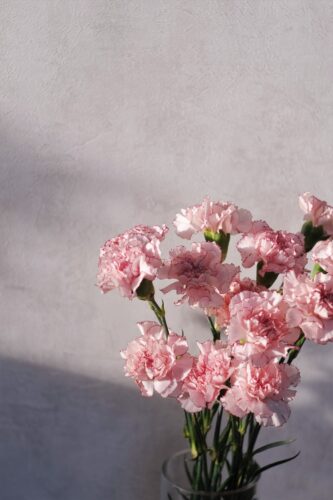
Italian Carnation Varieties And Colors
- Italian carnations are known for their vibrant colors and beautiful fragrance. Here are some popular italian carnation varieties you can grow in your garden:
- Fiori di pesco: These carnations have delicate, peach-colored petals that resemble the blossoms of a peach tree.
- Rosa antico: These carnations feature soft pink petals with a hint of antique rose hues, giving them an elegant and timeless charm.
- Fiore innamorato: With rich, deep red petals, fiore innamorato carnations symbolize intense passion and love.
- Bianco chiaro: These carnations bloom in pure white, exuding a sense of purity and innocence.
- Giallo sole: These bright yellow carnations bring sunshine and cheerfulness to any garden.
Techniques For Growing Italian Carnations
- To successfully grow italian carnations in your garden, keep the following tips in mind:
- Soil preparation: Prepare a well-draining soil mix by adding organic matter such as compost or peat moss. Carnations thrive in slightly alkaline soil with a ph level around 7.0.
- Sunlight: Place your carnation plants in an area that receives at least 6 hours of direct sunlight per day. They love the warm mediterranean climate.
- Watering: Water your carnations regularly to keep the soil moist, but avoid overwatering, as it can lead to root rot. Aim for a balance between moisture and proper drainage.
- Fertilization: Feed your carnations with a balanced, slow-release fertilizer every month during the growing season to promote healthy growth and abundant blooms.
- Pruning: Trim off spent flowers regularly to encourage continuous blooming. Pruning also helps maintain the plant’s shape and vigor.
Using Carnations To Infuse Fragrance Into Your Garden
- Carnations are not only visually stunning but also highly fragrant. Here’s how you can incorporate their delightful scent into your garden:
- Garden borders: Use carnations as a border plant along walkways or garden beds to enjoy their intoxicating fragrance as you stroll through your garden.
- Flower arrangements: Cut a few carnation blooms and place them in vases or bouquets indoors to fill your home with their pleasant scent.
- Potpourri: Dry carnation petals and mix them with other dried flowers and herbs to create your own homemade potpourri. Place it in bowls or sachets for a fragrant touch.
- Herbal remedies: Carnations have medicinal properties and are often used in herbal remedies. You can make teas or infusions from the petals to enjoy their therapeutic benefits.
Carnations are not only visually appealing but also versatile in terms of color and fragrance. By growing these traditional italian flowers in your garden, you can create a captivating sensory experience for yourself and your visitors. So, why not add some italian charm to your garden with these delightful blooms?
Peonies: Italian Elegance
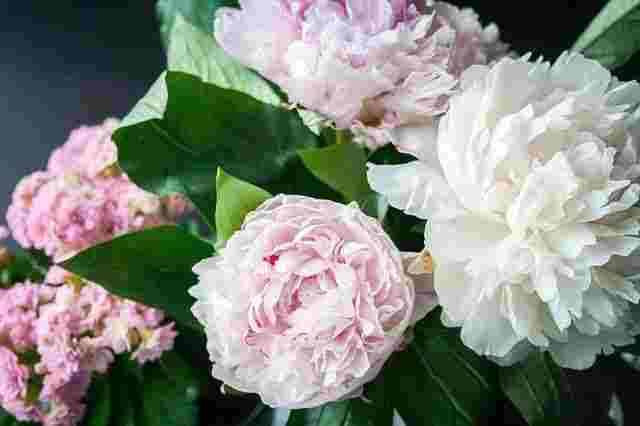
Italian peony varieties that exude elegance:
- Italian peonies are known for their elegance and beauty. These varieties have been cultivated over the years to showcase the very best of what peonies have to offer.
- One such italian peony variety is the ‘bowl of cream,’ which features large, creamy white petals that are perfect for creating a luxurious and refined atmosphere in your garden.
- Another stunning italian peony is the ‘raspberry charm,’ with its vibrant pink blooms that add a vivid pop of color to any garden. These peonies are sure to impress with their grace and charm.
Nurturing italian peonies for stunning blooms:
- To ensure your italian peonies grow and bloom at their best, it’s important to provide them with the right care and conditions.
- These peonies thrive in well-draining soil that is rich in organic matter. Prepare the soil by mixing in compost or well-rotted manure before planting.
- Italian peonies prefer full sun but can tolerate some shade. Choose a location in your garden that receives at least six hours of direct sunlight each day.
- Water your peonies deeply and consistently, especially during dry periods. Be careful not to overwater, as too much moisture can lead to root rot.
- Prune your peonies in early spring to promote healthy growth and abundant blooms. Remove any dead or damaged branches and thin out crowded areas.
Creating a luxurious atmosphere with italian peonies:
- Italian peonies bring an air of elegance and sophistication to any garden or landscape design.
- The luxurious blooms of italian peonies can be used as focal points in flower arrangements, adding a touch of class and refinement.
- Consider pairing italian peonies with other flowers, such as roses or lilies, to create stunning and eye-catching bouquets.
- Whether you’re hosting a garden party or simply want to enhance your outdoor space, italian peonies can create a sense of luxury and beauty that will leave a lasting impression.
Italian peonies are the epitome of elegance and can transform any garden into a luxurious oasis. With their stunning blooms and refined beauty, these varieties are perfect for creating an atmosphere of sophistication. By providing the right care and conditions, you can ensure your italian peonies thrive and showcase their full potential.
Whether you use them as focal points in flower arrangements or simply enjoy their beauty in the garden, italian peonies will undoubtedly add a touch of elegance to your outdoor space.
Dahlias: Italian Floral Showstoppers
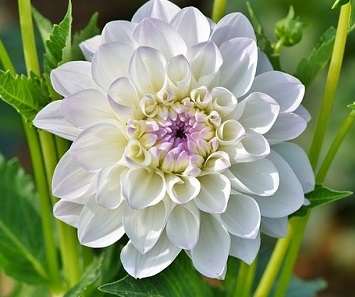
Stunning Italian Dahlia Varieties
Italian dahlias, also known as “italiana” in the gardening community, are renowned for their vibrant beauty and captivating presence. These showstopping flowers come in a variety of stunning varieties, adding elegance and charm to any garden. Here are a few popular italian dahlia varieties that you can easily grow in your own garden:
- Café au lait: This dahlia variety features large, creamy beige blooms with hints of blush pink and peach. Its soft, romantic colors make it a perfect choice for creating dreamy floral arrangements.
- Bishop of llandaff: With its deep crimson red petals and contrasting dark foliage, this dahlia variety creates a striking visual impact. It’s a true focal point in any garden or flower bed.
- Blue bayou: Sporting unique lavender-tinged petals, the blue bayou dahlia offers a touch of mystique to your garden. Its delicate blooms and compact habit make it a versatile choice for borders or containers.
- Fire and ice: Aptly named, the fire and ice dahlia features fiery red outer petals that gradually fade to a pure white center. This mesmerizing contrast adds drama and flair to any floral arrangement.
- Crazy love: If you’re after a dahlia with vibrant colors and an artistic flair, consider the crazy love variety. It displays intricate, bi-colored petals in shades of yellow and red, creating a visual spectacle in your garden.
Cultivation Tips For Italian Dahlias
To successfully cultivate italian dahlias and enjoy their stunning blooms, keep the following tips in mind:
- Planting: Choose a sunny spot in your garden with well-draining soil. Italian dahlias thrive in full sun and require at least six hours of direct sunlight daily.
- Soil preparation: Before planting, enrich the soil with organic matter to improve its fertility and drainage. Incorporate compost or well-rotted manure into the soil to promote healthy growth.
- Spacing: Italian dahlias need adequate space to grow and flourish. When planting, ensure a distance of about 18 to 24 inches apart between each plant to provide ample room for their full development.
- Watering: Regular watering is essential for italian dahlias, especially during dry spells. Water deeply once or twice a week to keep the soil evenly moist but not waterlogged. Avoid overhead watering to prevent fungal diseases.
- Pruning: To encourage bushier growth and additional blooms, pinch off the top set of leaves once the plant reaches a height of around 12 inches. This promotes lateral branching and more flower production.
Design Ideas Featuring Italian Dahlias As The Focal Point
Italian dahlias possess such captivating beauty that they deserve to be the focal point of your garden or floral arrangements. Here are some design suggestions to showcase these stunning flowers:
- Mixed flower beds: Create eye-catching mixed flower beds by pairing italian dahlias with complementary plants. Combine them with perennials like purple asters or ornamental grasses to add texture and height variation.
- Cut flower arrangements: Italian dahlias are perfect for crafting breathtaking cut flower arrangements. Their large blooms add drama and elegance to bouquets. Pair them with other garden favorites like roses or lisianthus for a stunning display.
- Container gardens: Bring italian dahlias to your patio or balcony with container gardening. Choose a large container, fill it with well-draining soil, and plant a single dahlia variety as the centerpiece. Surround it with trailing vines or colorful annuals for a vibrant display.
- Color-themed borders: Create a mesmerizing border by planting italian dahlias of the same color or in complementary hues. For example, a border filled with various shades of pink dahlias will create a cohesive and visually striking display.
- Formal gardens: Italian dahlias can be used to add a touch of formality to your garden. Plant them in symmetrical patterns, like a row or geometric shapes, to create a visually pleasing and structured design.
Italian dahlias are true showstoppers that can elevate the aesthetics of any garden. With their stunning varieties, proper cultivation, and thoughtful design incorporation, these beautiful flowers will steal the spotlight and bring joy to your gardening endeavors.
Zinnias: Italian Garden Staples
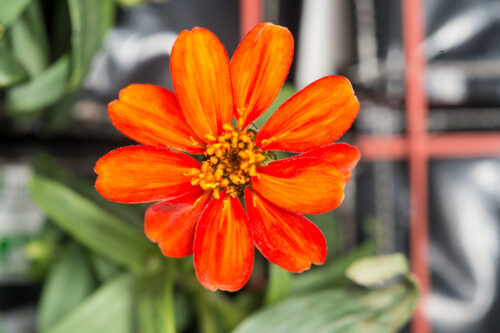
The Versatility Of Italian Zinnias
Italian zinnias are a true staple in any italian garden, thanks to their versatility and vibrant colors. These beautiful flowers can bring life and charm to any garden, creating a stunning visual display that is sure to impress. Whether you’re a seasoned gardener or a beginner, italian zinnias are easy to grow and require minimal maintenance.
Let’s explore the key points about the versatility of italian zinnias:
- Italian zinnias come in a wide range of colors, from deep reds and purples to bright pinks, oranges, and yellows. This extensive color palette allows you to create captivating flower arrangements that perfectly complement your garden’s aesthetic.
- These versatile flowers can be grown in various settings, including beds, borders, and containers. Whether you have a large garden or limited space, italian zinnias can adapt to different environments and flourish in any location.
- Italian zinnias are not only beautiful but also attract beneficial pollinators like bees and butterflies. By planting these flowers in your garden, you can create a pollinator-friendly environment that supports the health and well-being of these important creatures.
- These hardy flowers are known for their long blooming period, ensuring a continuous display of color throughout the summer months. With proper care and regular deadheading, italian zinnias will reward you with abundant blooms that last well into the fall.
Growing Italian Zinnias For Vibrant Colors
The vibrant colors of italian zinnias are one of their most appealing characteristics. By following a few simple guidelines, you can ensure that your italian zinnias produce stunning and vivid blooms:
- Start by selecting high-quality italian zinnia seeds or seedlings from a reputable source. Look for varieties that are known for their vibrant colors and strong growth.
- Choose a sunny location for planting your zinnias, as they thrive in full sunlight. Ensure that the soil is well-draining as zinnias do not like overly wet conditions.
- Prepare the soil by removing any weeds or debris and amend it with organic matter or compost for added nutrients. This will provide a fertile environment for your zinnias to grow and bloom.
- Sow the zinnia seeds according to the instructions on the packet, ensuring that they are planted at the appropriate depth. If using seedlings, gently transplant them into the prepared soil, taking care not to disturb the roots.
- Water the zinnias regularly, keeping the soil moist but not saturated. Avoid overhead watering as it can cause diseases. Instead, water at the base of the plants.
- Pinch back the growing tips of your zinnias when they reach a height of about 6 inches. This will encourage bushier growth and more abundant blooms.
- To keep the colors of your zinnias vibrant, deadhead the spent flowers regularly. This will also prevent them from going to seed too quickly, prolonging their blooming period.
How To Attract Pollinators With Italian Zinnias
Italian zinnias not only add beauty to your garden but also play a vital role in attracting pollinators. Here are some tips to maximize the pollinator-attracting benefits of your italian zinnias:
- Plant a variety of zinnia colors and sizes to attract a diverse range of pollinators. Different species of bees, butterflies, and other beneficial insects have preferences for specific flower colors and shapes.
- Avoid using insecticides or pesticides in your garden, as they can harm the very pollinators you’re trying to attract. Opt for organic gardening practices instead to create a safe and inviting environment for these essential creatures.
- Provide additional food and water sources for pollinators by incorporating other flowering plants and installing a small birdbath or shallow dish with fresh water. This will encourage pollinators to stay and continue their vital work in your garden.
- Maintain a continuous blooming cycle by planting zinnias in staggered intervals or incorporating other flowering plants with different blooming periods. This will ensure a steady supply of nectar and pollen for pollinators throughout the growing season.
- Consider leaving a small area of your garden untouched, allowing native plants and wildflowers to grow freely. These natural habitats provide important resources for pollinators and help support their populations.
By incorporating italian zinnias into your garden, you can enhance its beauty, enjoy a vibrant display of colors, and support the important work of pollinators. With their versatility and ease of growth, these flowers are an excellent choice for any gardener looking to create a vibrant and pollinator-friendly space.
Anemones: Italian Spring Wonders

Italian Anemone Festivals And Traditions
Italian culture has a long-standing tradition of celebrating the arrival of spring with vibrant festivals and events. Among these festivities, italian anemone festivals hold a special place. These festivals center around the delicate and enchanting beauty of italian anemones, showcasing their irresistible charm.
Here are a few key points about these captivating italian anemone festivals and the traditions associated with them:
- Celebration of spring: Italian anemone festivals mark the arrival of spring, symbolizing hope, renewal, and vibrant colors after the cold winter months.
- Visually stunning displays: During these festivals, towns and cities across italy showcase an incredible array of anemone displays, transforming streets and gardens into a spectacle of colorful blooms.
- Cultural significance: Italian anemones, also known as “windflowers” due to their delicate, wind-dancing petals, symbolize protection against evil spirits and bring good luck in italian folklore.
- Participation and merriment: Visitors and locals alike participate in the festivals, enjoying live music, dancing, and traditional food and drink amidst the intoxicating fragrance of anemones.
- Anemone bouquets and corsages: Anemones play a vital role in italian festivities, with people gifting each other bouquets and wearing anemone corsages during these events. This tradition signifies friendship, love, and joy.
Cultivating Italian Anemones In Your Garden
If you want to bring the delicate beauty of italian anemones to your own garden, look no further. These enchanting flowers are relatively easy to grow and thrive in various climates. Here are a few key points to consider when cultivating italian anemones in your garden:
- Choosing the right variety: There are several italian anemone varieties to choose from, including anemone blanda, anemone coronaria, and anemone nemorosa. Select the variety that suits your climate and garden conditions best.
- Ideal growing conditions: Italian anemones prefer well-drained soil and a sunny or partially shaded location. Ensure that the soil is fertile, moist, and enriched with organic matter to promote healthy growth.
- Planting: Plant italian anemone tubers or rhizomes in autumn for spring blooms. Dig holes that are two to three times the size of the tubers, spacing them about four to six inches apart. Cover the tubers with soil and water thoroughly.
- Watering and care: Once planted, water the anemones regularly, keeping the soil moist but not waterlogged. Mulching around the plants can help retain moisture and suppress weed growth. Apply a balanced fertilizer during the growing season to support optimal blooming.
- Protecting from frost: Italian anemones can be sensitive to frost. To protect them during colder months, apply a layer of mulch or straw over the soil around the plants to insulate the tubers.
Italian anemones bring a touch of elegance and grace to any garden. With proper care and attention, you can cultivate these captivating blooms and create your own slice of italian springtime right at home.
Olive Trees: Iconic Italian Flora
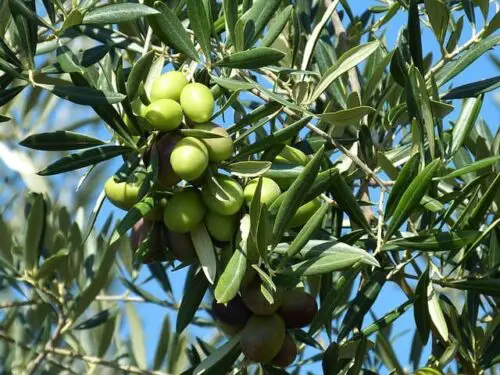
Cultural Significance Of Italian Olive Trees
Italian olive trees have a rich cultural significance that dates back centuries. These iconic trees are not only known for their beauty, but also for their contribution to italian cuisine and traditions. Here are some key points about the cultural significance of italian olive trees:
- Symbol of peace: Olive branches have long been associated with peace and harmony, dating back to ancient greek and roman times. In italian culture, the olive tree symbolizes peace and tranquility.
- Mediterranean heritage: Olive trees are native to the mediterranean region, and italy has a strong connection to this heritage. The cultivation of olive trees in italy dates back thousands of years, making it an integral part of the country’s history and identity.
- Olive oil production: Italy is renowned for its high-quality olive oil, which is highly valued for its rich flavor and health benefits. Italian olive trees play a significant role in the production of this precious liquid gold.
- Traditional festivals and rituals: Olive trees are also celebrated during various festivals and rituals in italy. For example, the olive oil festival in tuscany and the feast of the olive trees in calabria are popular events that showcase the importance of olive trees in italian culture.
Growing And Caring For Italian Olive Trees In Your Garden
Having your own italian olive tree in your garden can be a rewarding experience. Here are some key points to keep in mind when growing and caring for italian olive trees:
- Choose the right variety: There are various types of olive trees available, each with its own characteristics and requirements. It’s essential to select a variety that is suitable for your climate and soil conditions.
- Location and sunlight: Olive trees thrive in sunny and warm climates. Choose a spot in your garden that receives full sun for most of the day. Ensure good air circulation around the tree as well.
- Soil and drainage: Italian olive trees prefer well-draining soil. Ensure that the soil in your garden is loose, fertile, and has good drainage to prevent waterlogging.
- Watering: While olive trees are drought-tolerant, they still require regular watering, especially during hot and dry periods. Water deeply but infrequently to encourage deep root growth.
- Pruning and shaping: Regular pruning helps maintain the shape and health of the tree. Prune during the winter months to remove dead or diseased branches and promote new growth.
- Fertilization: Olive trees benefit from a balanced fertilizer with a higher nitrogen content in the spring. Avoid excessive fertilization as it can negatively impact fruiting.
Harvesting And Utilizing Olives From Your Own Tree
Once your italian olive tree starts producing olives, it’s time to harvest and enjoy the fruits of your labor. Here are some key points to consider when harvesting and utilizing olives from your own tree:
- Harvesting time: Olive harvesting typically takes place in the late autumn or early winter when the olives have reached their optimal ripeness. The exact timing may vary depending on the variety of olive tree you have.
- Handpicking vs. Mechanical harvesting: Small-scale gardeners often prefer handpicking olives to ensure quality and selective harvesting. However, if you have a large number of trees, mechanical harvesting may be more efficient.
- Olive curing methods: There are several methods for curing olives, including brine-curing, water-curing, and dry-curing. Each method imparts a unique flavor to the olives. Experiment and find the curing method that suits your taste preferences.
- Using fresh olives in cooking: Freshly harvested olives can be used in various culinary creations. Try incorporating them into salads, pasta dishes, stews, or even homemade olive tapenade.
- Pressing olives for oil: If you have an abundance of olives, you can consider pressing them to extract your own olive oil. This process requires specialized equipment or professional assistance.
- Sharing the harvest: Olive trees often produce a generous amount of fruit. Consider sharing your harvest with friends, family, or neighbors to spread the joy of homegrown olives.
Now that you have a deeper understanding of the cultural significance, growing, and harvesting aspects of italian olive trees, you’re ready to embark on your own olive tree journey in your garden. Enjoy the beauty, flavors, and traditions that these iconic trees bring to your italian-inspired space.
Frequently Asked Questions On 20 Traditional Italian Flowers You Can Easily Grow In Your Garden
What Are Some Traditional Italian Flowers?
Some traditional italian flowers include roses, lavender, sunflowers, tulips, daisies, and marigolds. These flowers are popular in italian gardens for their beauty, fragrance, and cultural significance.
Can I Easily Grow Italian Flowers In My Garden?
Yes, many traditional italian flowers are easy to grow in your garden. These flowers are resilient and adaptable to different climates and soil conditions. Just make sure to provide them with proper sunlight, water, and care, and you’ll enjoy a beautiful italian garden.
What Are The Benefits Of Growing Traditional Italian Flowers?
Growing traditional italian flowers in your garden not only adds beauty and fragrance to your space but also brings several benefits. These flowers attract pollinators like bees and butterflies, contribute to biodiversity, and create a peaceful and harmonious atmosphere. They also provide opportunities for gardening and cultural exploration.
Conclusion
Growing traditional italian flowers in your garden brings a touch of elegance and charm that transports you to the exquisite landscapes of italy. With their vibrant colors and captivating scents, these flowers create a visual masterpiece and add a delightful fragrance to your outdoor space.
Whether you choose the romantic allure of the rose or the cheerful brightness of sunflowers, incorporating these italian blooms into your garden will provide an authentic and whimsical experience. From the delicate charm of camellias to the timeless beauty of daisies, each flower holds its own unique appeal.
With proper care and attention, you can easily cultivate these italian flowers and enjoy their beauty year after year. So, why not embark on a gardening journey and embrace the essence of italy with these 20 traditional italian flowers? Let your garden be a sanctuary of italian richness and beauty, a place where you can relax, unwind, and revel in the joy that blossoms bring.
